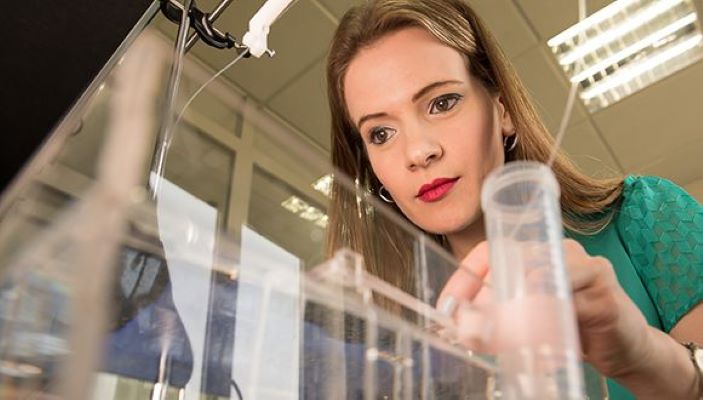A breakthrough ultrasound technique developed at Tel Aviv University to treat cancer may be applicable to Parkinson’s, Alzheimer’s and other diseases.
By Yakir Benzion, United With Israel
A Tel Aviv-based research team has developed a method to fight cancer by shooting microbubbles at cancer cells and then blowing them up using ultrasound.
The microbubbles explode like targeted smart warheads, creating holes in cancer cells’ membranes and enabling gene therapy delivery with tests showing that up to 80 percent of the tumor cells are killed.
That sounds super cool and super promising, but there’s a ton of science and hard work behind it, says Dr. Tali Ilovitsh from the Biomedical Engineering Department at Tel Aviv University.
Ultrasound has been used for years as a diagnostic tool for different cancers, but now Dr. Ilovitsh has weaponized it in the fight against the “big C” by teaming it up with a gene therapy “Trojan horse.”
She started on the breakthrough technology during her post doctorate research at Stanford University and has continued the work back home in Tel Aviv for the method that will deliver gene therapy treatment directly into breast cancer cells.
“Microbubbles are microscopic bubbles filled with gas, with a diameter as small as one tenth of a blood vessel,” Dr. Ilovitsh explains.
“At certain frequencies and pressures, sound waves cause the microbubbles to act like balloons: they expand and contract periodically. This process increases the transfer of substances from the blood vessels into the surrounding tissue.”
“We discovered that using lower [ultrasound] frequencies than those applied previously, microbubbles can significantly expand, until they explode violently. We realized that this discovery could be used as a platform for cancer treatment and started to inject microbubbles into tumors directly,” Dr. Ilovitsh said.
In lab experiments with mice, “about 80 percent of tumor cells were destroyed in the explosion, which was positive on its own,” she said, but not good enough, because you need to destroy the entire tumor.
“In order to prevent the remaining cancer cells from spreading … we injected an immunotherapy gene alongside the microbubbles, which acts as a Trojan horse, and signaled the immune system to attack the cancer cell,” she said explaining that adding the gene therapy to the bubbles lets them directly enter the remaining 20 percent of the cancer through tiny holes formed by the exploding bubbles.
Once the gene is in it triggers an immune response that destroys the cancer cell.
“The majority of cancer cells were destroyed by the explosion, and the remaining cells consumed the immunotherapy gene through the holes that were created in their membranes. The gene caused the cells to produce a substance that triggered the immune system to attack the cancer cell. In fact, our mice had tumors on both sides of their bodies. Despite the fact that we conducted the treatment only on one side, the immune system attacked the distant side as well,” Dr. Ilovitsh said.
Not only is the new targeted treatment safe and cost effective, it may be able to be used as a noninvasive treatment for brain related diseases such as brain tumors and other neurodegenerative conditions such as Alzheimer’s and Parkinson’s disease.
“The Blood-Brain barrier does not allow for medications to penetrate through, but microbubbles can temporarily open the barrier, enabling the arrival of the treatment to the target area without the need for an invasive surgical intervention,” she said.
